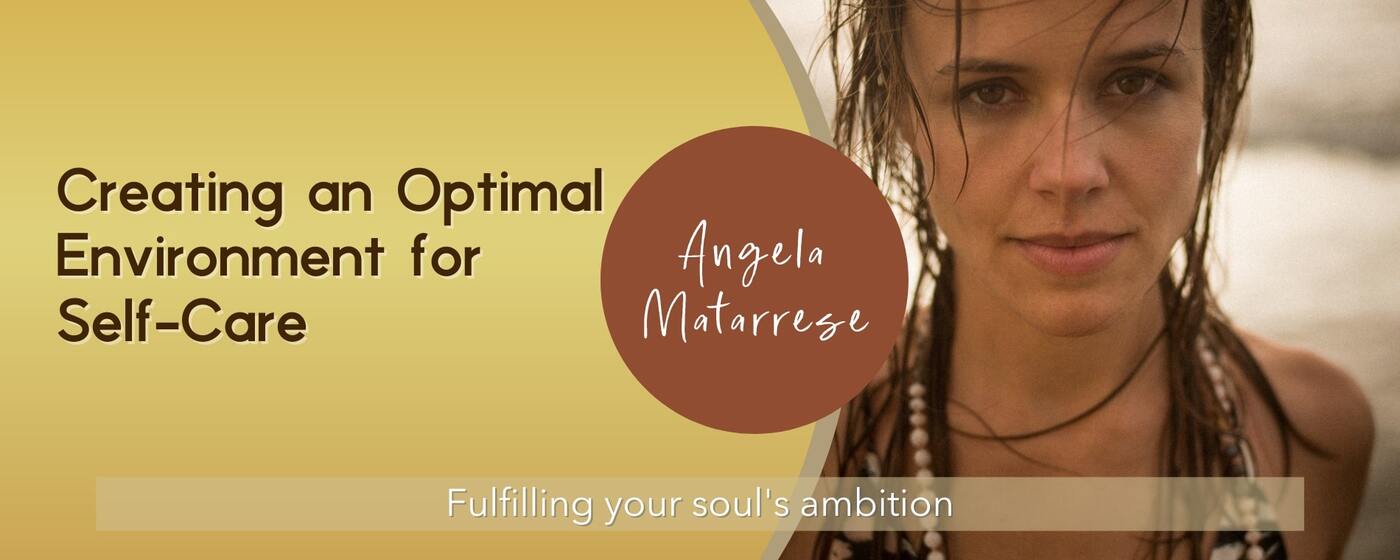
Creating an Optimal Environment for Self-Care
As Winston Churchill once said, “We shape our environments; thereafter they shape us.” Take a moment and reflect on the truth of this statement for yourself. Are there spaces you have been in that have felt nurturing and supportive to their purpose? Alternately have you ever experienced more stress or discomfort in a space? How can we create spaces that shape our optimal self-care routine?
Our environments are so important. Especially our homes. They are the place for us to nourish ourselves and our loved ones through work, rest, and entertaining. When I talk about shaping our environment for self-care, I am not talking only about specific self-care actions such as salt baths, breath/movement practice, or self-massage. I’m also talking about optimizing your entire environment so that every action you take throughout the day, you feel like you are completing an act of self-care, whether it be preparing a meal for the family or vacuuming the rugs!
I found myself sensitive to my environment from a young age. My childhood self was always rearranging her bedroom furniture and deeply analyzing how she could use her 10’x12’ space more optimally. While I had wallpaper that permanently set the color scheme, I made the most with it and fantasized about what I would do differently to update it. This sensitivity followed me everywhere. Every store, restaurant, dentist office, or friend’s house I’d go to, I would constantly visualize in my head how I could make it better. So naturally by the age of 14, I made the decision that I was going to go to college for Interior Design.
Many people I meet think my personal spaces are shaped so well because of my Bachelors Degree in Interior Design. While I’m sure that helps a lot, my years of education and practice focused on much more technical aspects of designing interiors. I believe anyone can create a more nourishing and supportive environment for themselves regardless of their technical training, how much space they have, or what budget is available! Here are some quick tips to begin.
Start small
Does just starting to read this cause any tension or feelings of overwhelm in your body or mind? Depending on our living and family situation, this could send your mind in a million places at once — things to go through, stuff to get rid of, rooms to clean, things that need updating, resistance among family members…
Slow down.
One thing at a time.
This is where we can bring the microcosm vs. macrocosm concept to your spaces. While the macrocosm could be your whole entire house, the microcosm could be one room. While the macrocosm could be a whole entire room, the microcosm could be a desk. While the macrocosm could be the entire desk, the microcosm could be a drawer. Start at the micro-est microcosm to begin. In fact, even if you don’t feel overwhelmed reading this I would still recommend this process, as it will give the best overall order from the inside out, just as we look to do in our bodies and minds.
Examine form vs. function
Good design is mastering the balance of form and function. We want the overall form of our spaces to look good and contain the item’s we want in them, yet we also need to evaluate the function of the space and the purpose each item serves within it.
Decide what stays and what goes
Whether you decided to start in the microcosm of a room or a drawer, this is essential! Do this thoroughly, as the more blank the slate, the more room for transformation and support! This can be a fun but also emotional task. This is where we go through our stuff and analyze it. Does it have a function and/or do you like the form? Does it have special meaning? Is it bringing positivity or negativity into your mind-space? Sell, recycle, repurpose, or donate the items that don’t serve a purpose, have special meaning, and/or bring negativity to your mind-space. Think about it as a detox to your environment. A sacred offering. Turn it into a ritual performed seasonally, adding smudging with sage or palo santo to the process. Just completing this process can be the most beautiful act of self-care!
Discover the function of the space
Once the purge is done, take some time to contemplate how you want the space to function. What is its overall purpose and how will that purpose lead you to greater self-care? Once again, maybe you are just in a drawer or maybe a whole room. If you are at a drawer, analyze what contents best support you and how they can be organized. Depending on what was purged, maybe you find a better way to organize the contents, or maybe you find a completely new use for this drawer. This goes the same in a room. How has the room hindered your self-care in the past, and how would you like it to function differently in the future?
Look at how your spaces serve multiple functions. While a bedroom’s main purpose might be for you to sleep every night, might it also be where you practice your nightly foot massage? Where is a convenient space to store your massage oils and comfy old socks to encourage this routine? Maybe your living room is a great place for your morning breath body practice. How can you store your equipment for this and maybe even create an altar that also translates to a decoration for others during “normal” living room use? It could also be as simple as moving your coconut oil to the bathroom counter to remind you to oil pull after you scrape your tongue. As you expand your attention through each microcosm in each of your environments, discover how they can support you toward greater nurturance to yourself.
Analyze existing conditions
Once you discover how you want your space to function, take a moment to analyze the existing conditions of that space; mostly structural, but also decorative. The existing conditions might help or hinder the space’s function, but also give a more specific path on how to accomplish what we desire to bring to the space. This might seem discouraging, as I’m sure we all have conditions in our environments that we would love to change with more time and money. Rather than getting hung up on what we are not able to change, we can see these existing conditions as a creative endeavor to work around!
As a designer I have always been passionate about working with existing conditions. There is nothing more fun to me than making bright teal countertops or an outdated sofa look acceptable by updating what surrounds them (granted they are still functioning well) and look at them as a fun design “quirk.” This is also the most environmentally friendly way to design, as it’s not creating unnecessary waste or lessening air quality with new materials, glues, paints, etc. Sometimes we must see the form as preceding the function. As we analyze our existing conditions, ideal or not, we find a clearer path for how to uniquely set up our optimal self-care environments.
Identify your design language
This is the fun part where we get into the forms our spaces take. We want the forms (furniture, fixtures, equipment, accessories, décor) in our spaces to support and serve the function, yet also find them pleasing to our eyes. Think about what types of forms draw you in by identifying your design language.
We each have our own vocabulary and use certain words and expressions to communicate our truths. This is the same for design, but rather than communicating with words, we communicate with the Elements of Design; space, mass, line, texture, pattern, light, color, and form. Start by looking around your spaces to see what areas or items catch your eyes and warm your heart. Start to consider why it draws you in. Is it the color or patterns or maybe the quality of the lighting in the area? What kind of patterns or texture support you? This process is how you discover your unique design language and how to use form to encourage your quest for self-care.
Work with the Principles of Design
While some of us might have more of a minimalistic and simple design language, others might feel theirs is vast and eclectic. Either language is good as long as it’s supportive to you! Let your unique language invite creativity in as you learn to use the principles of design to combine the forms in your space!
Many of us may already have a “knack for design” and naturally do this, but some might not see it as easily. Either way it can be learned if there is intention and interest. The principles of design allow us to compare our forms through balance, rhythm, emphasis, scale, proportion, unity, variety, and harmony. While there are entire books written on the Principles of Design alone, we will just briefly discuss them here and how they can support our life of self-care.
As you look at the functional forms in your environment to support your life of self-care, how do they harmonize together? When we look at balance, we see if the forms feel like too much/not enough or are too heavy/too light in any areas and we can adjust as needed. Emphasis, scale, and proportion can be looked at similarly with items size and prominence. If too much attention is drawn to an item because of its size or color, what can we add around it to harmonize that? Rhythm and variety invite us to look at the specific items, patterns, and colors of our space and forms and how to find unity among even the most contrasting of items. While I have an eclectic style myself, and my space has a variety of color, forms, and patterns, I get a kick out of analyzing, arranging and adjusting based on the Principles of Design in order to create harmony!
I hope this finds you inspired and ready to have fun in creating your optimal environment for a life focused on self-care. As we create spaces that function to support self-care, by using forms we love in our spaces, we can bring in more consistent awareness to our practice. As we build our environments to nourish us optimally toward loving awareness in everyday tasks, our existence becomes an act of constant self-care even as we maintain our busy lives and schedules. While having an Interior Design degree or working with an Interior Designer are helpful to create your most optimal environment for self-care, these are simple things anyone can learn to accomplish it!


